Panting is normal for dogs as it’s one of the ways they keep themselves cool on a hot day. It’s also normal for your dog to explore their environment once they’ve caught a whiff of something interesting.
But what if you see your dog panting heavily on a cool evening? What if they keep walking back and forth like they’re on edge? Restless behavior is usually a sign that something’s up with your pooch.
So what, exactly, are the reasons behind a dog’s excessive panting and pacing? And is there any way you can help them feel better?
We’ll be answering these questions and more in today’s article. So read on!
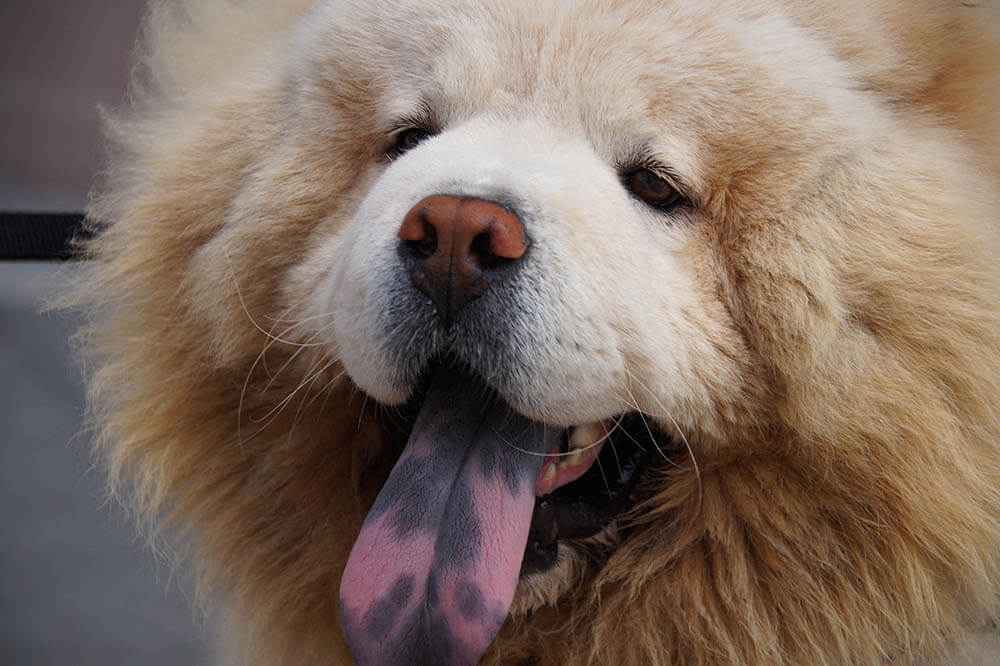
When panting is normal
Panting is necessary for every dog’s survival as it plays a major role in the regulation of their body temperature.
Unlike humans, dogs can’t cool themselves down through sweating. Dogs do sweat through their paw pads, but this alone isn’t enough to deal with excess body heat.
Thankfully, panting allows dogs to breathe rapidly, which quickly expels the hot air from their lungs and takes in the cool air from their surroundings. This speeds up the evaporation of the water in their lungs and mouth and on their tongue and nose, which, in turn, lowers their body temperature.
In short, dogs pant to prevent their bodies from overheating. This is why heavy panting is normal behavior after exercise; strenuous physical activities raise the body temperature, so dogs pant to lower said temperature. Dogs pant when the weather is hot for the same reason.
Of course, you can help cool your dog down by providing them regular access to cool drinking water and having them stay in an air-conditioned room or any space with fresh, moving air.
So when is your dog’s panting a cause for concern?
Excessive pacing and panting
Is your dog panting heavily despite the lovely weather? Do they continue breathing rapidly long after the end of their walk? How about if they’ve had no exercise at all? Unexplained, excessive panting is usually a sign that something’s wrong with your pet.
Is your dog pacing? Do they keep returning to the same spots, checking the windows, or patrolling your property like they’re on endless guard duty? A restless dog is a dog that’s telling you they’re not in a great mood. Maybe they’re even in pain.
Whether or not they occur simultaneously, abnormal panting and restlessness are symptomatic of a problem likely requiring treatment by a vet, animal behaviorist, or both.
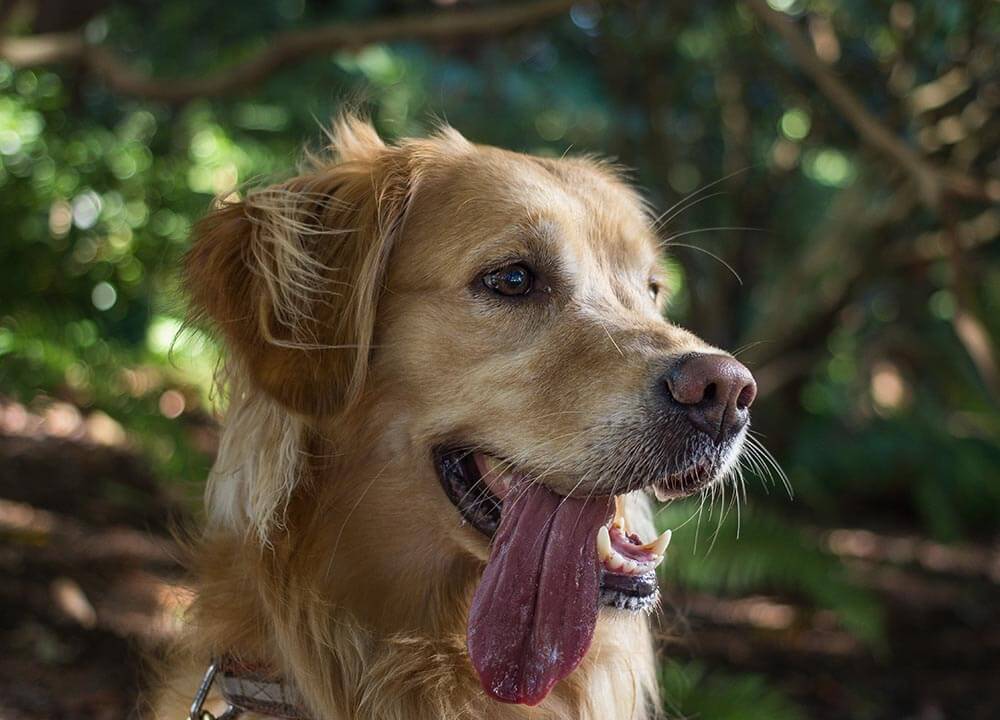
Reasons for excessive pacing and panting
The many possible issues behind your dog’s troubling behavior include:
1. Anxiety, stress, or fear
Like humans, dogs can struggle with mental health issues. But since they can’t voice their concerns to a friend or a shrink, they resort to heavy panting and restless pacing. Other behavioral cues include destructive behaviors such as chewing, digging, and repetitive whining, trembling, pawing, yawning, licking, barking, and more. An extremely anxious dog may even stick to their owner like Velcro.
Canine anxiety and stress stem from various factors. Some of them are easy to identify. Most dogs, for example, don’t enjoy sudden loud noises such as thunder or fireworks. They also don’t like having their tail or ears being constantly pulled by screaming, privacy-invading children.
Your own actions may affect your dog’s mind. Maybe you recently moved the entire family into a new home and your canine friend is confused by the new environment. Maybe you’ve just brought home a new family member, such as a baby or an additional pet, and your dog is now unsure about their place in the pack. Even a change in routine, such as an abrupt end to daily walks, can turn a happy pet into an anxious dog.
Past tragedy – such as an accident, abuse or neglect, or the inability to find a forever home – can make a dog increasingly prone to chronic anxiety and stress.
Separation anxiety is a specific type of mental health concern that makes a dog go bonkers whenever a beloved family member leaves the house. It’s possible the poor thing was once abandoned by an owner, so now they think every time you go out the door, you’re abandoning them, too.

2. Severe or chronic pain
Anything that causes acute and/or enduring pain can alter a dog’s behavior.
Injury can lead to obvious signs of discomfort. For example, a dog with a broken leg will limp. One that’s recovering from surgery may whine or show disinterest in fun activities.
Some injuries produce subtler signs. Is your dog panting and restless? Your first thought likely won’t be, “My dog is injured.” But have you checked your dog’s mouth for a broken tooth? Another dog may be experiencing back pain after overstraining themselves during exercise. Yet another could be hiding a scratch under their fur.
And then there’s pain caused by serious illnesses or diseases such as those described in this article.
As a pet parent, it’s your job to stay observant of behavioral abnormalities such as extreme panting and restless pacing, as these could be signs your dog is suffering in silence.
3. Heat exhaustion or heat stroke
As previously discussed, dogs pant to cool off. However, if external temperatures are exceedingly hot, this panting may not be enough. In the worst-case scenario, your dog can suffer from heat exhaustion or heat stroke – serious conditions requiring urgent medical attention.
This is why you should never leave your pet sealed in a hot car; temperatures can rise to levels so deadly no amount of panting will save your dog. Breeds such as the Siberian Husky are particularly susceptible to succumbing to extreme heat, so avoid leaving them out in the yard during the peak of summer.
Prolonged panting and pacing are signs your dog is attempting but failing to combat this heat. Other signs include excessive drooling, weakness, vomiting, and confusion.
If you see such abnormal behavior in your dog, bring them to a vet immediately.
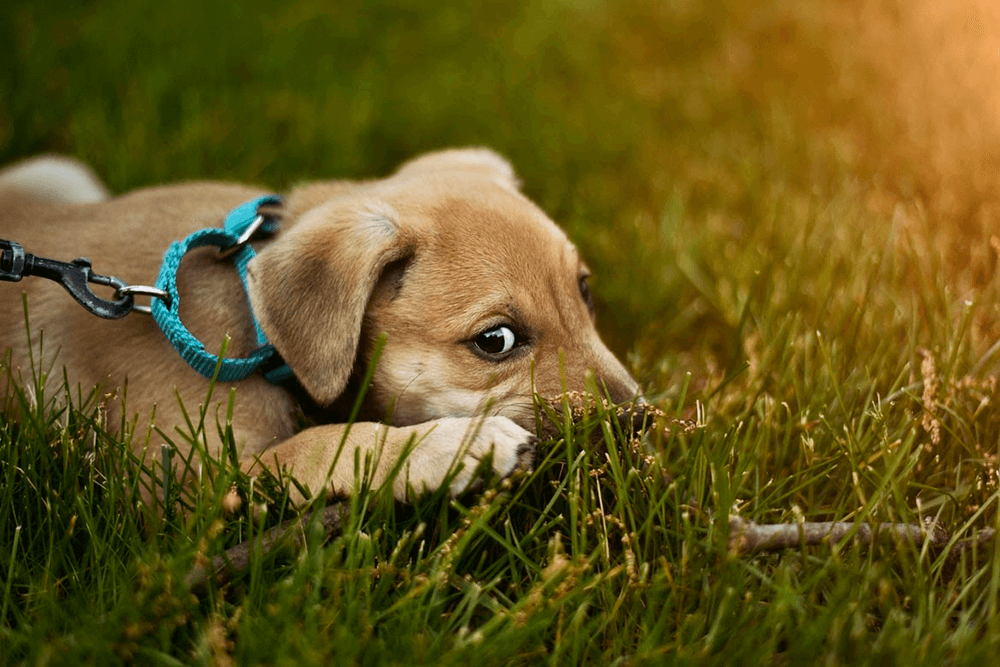
4. Poisoning
One way to answer the question “Why is my dog panting and restless?” is to find out what your dog’s been eating.
Dogs not only love to eat but also to explore their environment with their mouth, so anything they find on the ground may wind up in their stomach. If they ingest food that’s toxic to them (such as grapes or chocolate), your dog will be in trouble. If they ingest a cleaning rag that’s soaked with chemicals, your dog will be in trouble.
For such reasons, excessively pacing and panting dogs may be dogs that have been poisoned. Other symptoms to look out for include drooling, foaming at the mouth, vomiting, diarrhea, hyperactivity, agitation, labored breathing, abdominal pain, trembling, seizures, collapse, abnormal heartbeat, and more.
Poisoning is a medical emergency. If you suspect your dog has consumed something bad for them, don’t hesitate to take them to the vet’s office.
5. Bladder problems
Bladder stones and related concerns, such as urinary and ureter stones, are common in certain dog breeds and seniors. They can cause pain as well as other symptoms, including inappropriate peeing, difficulty urinating, increased urination, and bloody or cloudy urine – any of which can cause stress or anxiety that a dog may then express via pacing and panting.
If left untreated, stones can lead to a potentially life-threatening issue, such as a bladder rupture.
Stones and urinary tract infections usually go hand in hand.

6. Gastrointestinal issues
Any problem in the gastrointestinal tract can harm your dog’s health, causing anxiety- or stress-inducing pain.
For instance, intestinal parasites, such as roundworms, hookworms, whipworms, and tapeworms, can cause painful constipation, abdominal pain, or even a potentially deadly intestinal obstruction. Such worms are common among puppies.
The discomfort brought about by an irritated colon, pancreas, intestine, stomach, or esophagus ranges from mild to severe.
A dog will attempt to cope with their distress by panting or pacing excessively. Some dogs resort to eating dirt, rocks, or grass to induce vomiting or soothe a churning stomach. Other symptoms of gastrointestinal concerns include nausea, vomiting, a poor appetite, increased drinking, self-licking, the licking of objects, and diarrhea.
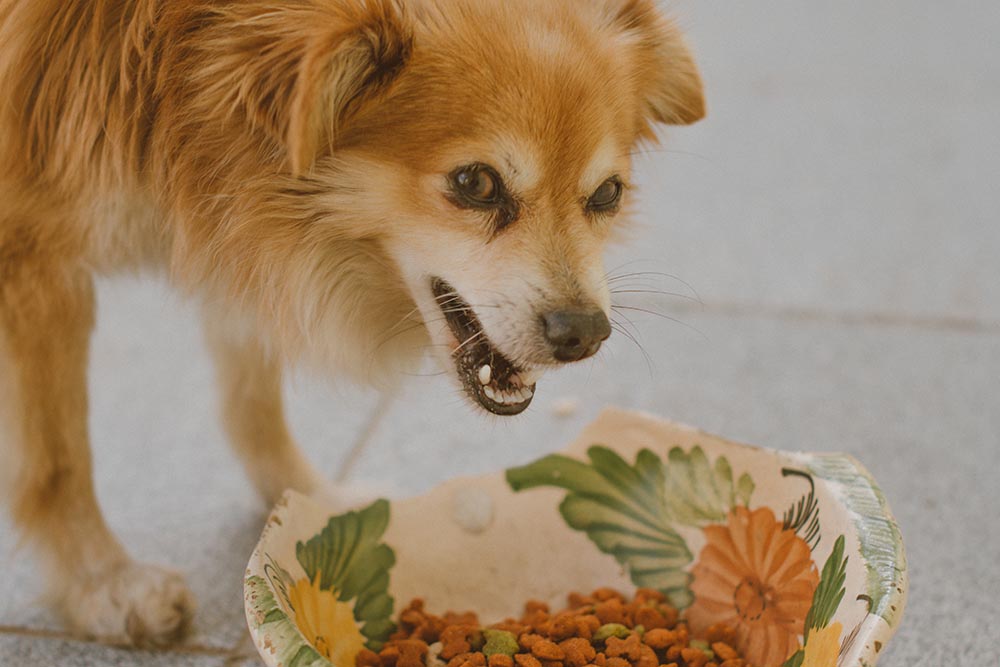
7. Oral or dental problems
Any issue concerning the mouth or teeth can be the underlying cause behind a dog’s behavioral abnormalities.
For example, an infected cavity or a mouth ulcer can be a source of anguish for poor doggo.
Gum disease, if left untreated, can lead not only to chronic pain but also gum erosion and teeth and bone loss.
Heavy breathing, endless pacing, and other strange behaviors may be your dog’s attempt to cope with the discomfort caused by such problems.
8. Obesity
Obesity makes regular physical activities more challenging, causing your dog to run out of breath sooner. This is why an overweight dog will pant heavily even after light exercise.
Obesity is associated with a slew of other problems, including arthritis, diabetes, and heart disease. Any pet parent wanting to improve their dog’s quality of life should therefore ensure their furbaby enjoys a balanced, nutritional diet.

9. Heart disease
Any issue preventing the heart from working properly can result in a dog panting excessively.
Unfortunately, there are many types of heart disease, including cardiomyopathies, arrhythmias, and valve disorders. Even parasites can harm your dog’s heart. Whatever the case, a problem affecting the heart can reduce its ability to pump blood throughout the body.
This means the dog’s tissues aren’t getting the sufficient oxygen they need to perform their tasks efficiently. Carbon dioxide also builds up in the dog’s system. Therefore, the dog breathes rapidly so they can inhale more oxygen-rich air and expel more carbon dioxide.
Cardiac disease can also make fluid accumulate in the lungs to cause extreme breathing difficulty. This may induce panic, turning a happy dog into a restless dog.
In addition to panting and restless pacing, symptoms to watch out for include a lack of stamina, weakness, coughing, coughing up blood or foam, collapse, and more.
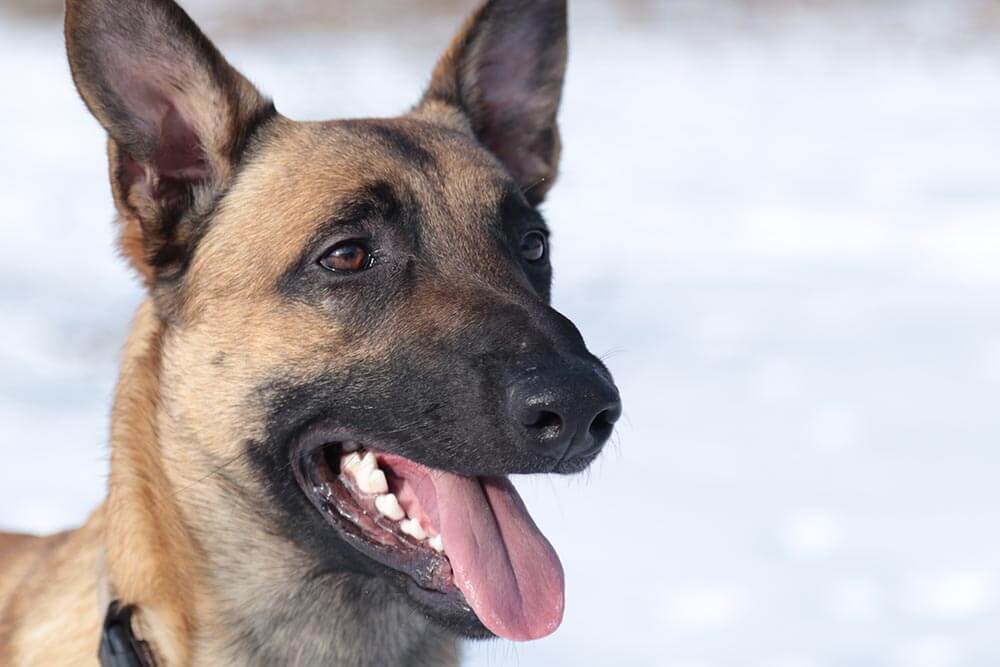
10. Respiratory distress
Because dogs suffering from respiratory distress can’t breathe properly, they’re unable to absorb enough oxygen into their body – which is bad news, given oxygen plays a vital role in many biological processes. In addition, such dogs can’t expel appropriate amounts of carbon dioxide and other waste products.
As a result, your canine companion may pant heavily in an attempt to get more oxygen into and more carbon dioxide out of their body. Any accompanying restless behavior is a reaction to their discomfort.
One type of respiratory disease is laryngeal paralysis. This is when the larynx becomes partially paralyzed, which prevents the efficient passage of air through the windpipe. A dog with laryngeal paralysis may pant excessively in a futile attempt to bring more cool, oxygen-rich air into their body. Such dogs are exposed to an increased risk of overheating and choking on their food. They may produce loud honking, roaring, or barking sounds during respiration and experience other symptoms including shortness of breath and coughing.
Laryngeal paralysis is more common in large-breed dogs.
Another respiratory issue that can result in panting and restless behavior is tracheal collapse, which is when the windpipe becomes abnormally narrow to cause labored breathing. A dog with a cough that grows worse whenever they’re excited may have this issue.
Small-breed dogs are more likely to suffer a tracheal collapse.
Other respiratory problems, such as pneumonia and kennel cough, can induce increased respiration. This can be mistaken for the heavy panting of a dog that has difficulty breathing.
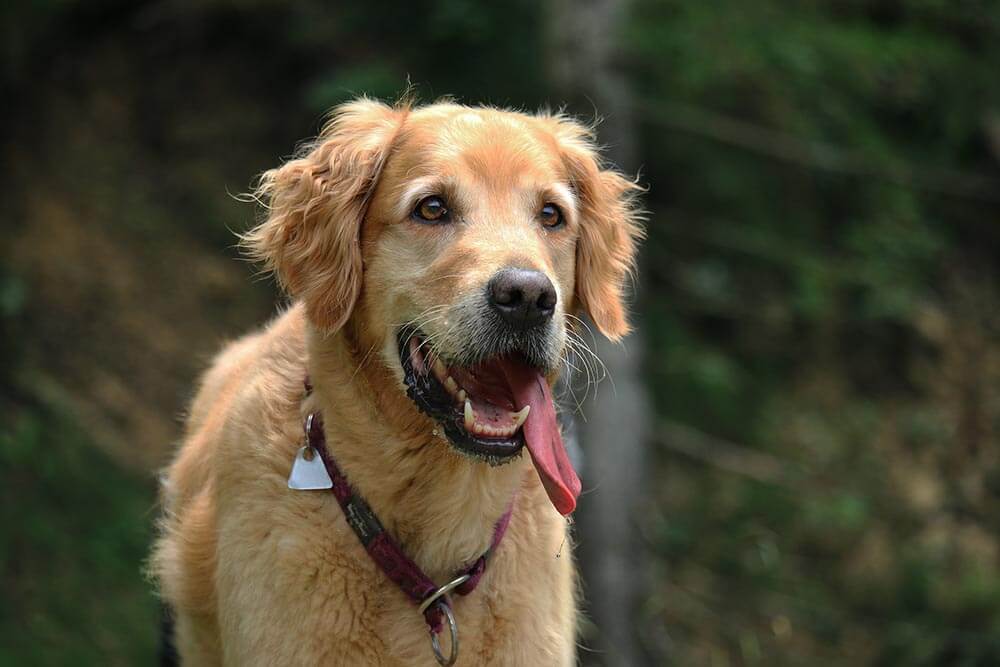
11. Neurological problems
Problems with your dog’s brain and/or nervous system can provoke various changes in your dog’s behavior and cognitive function.
For example, there’s epilepsy, a disorder of the central nervous system that provokes seizures or bouts of atypical behavior. The period after an epileptic episode can make a dog feel confused, stressed, or anxious, in turn encouraging restlessness. The violent convulsions caused by an episode can also result in excessive panting.
Other clinical signs of epilepsy include but are not limited to jerky movements, hallucinations, drooling, chewing, facial twitches, and unconsciousness.
A brain tumor is another type of neurological problem that can cause behavioral changes in your dog. Its clinical signs include a head tilt and walking in circles.
12. Canine cognitive disorder
A type of neurological disorder that may occur in dogs 10 years or older, canine cognitive disorder is the gradual development of dementia-like symptoms as the result of an aging brain. It’s also known as canine dementia, canine cognitive dysfunction, or CCD.
A senior dog with CCD may experience mild to severe changes in their cognitive, memory, and motor functions. The behavior is affected, as well, leading to sleep disturbances; confusion (such as getting lost in their own home); inappropriate urination and/or defecation; and alterations in the way they interact with people, other pets, and their surroundings.
Panting and pacing at night are also common CCD symptoms.
While there’s no cure for canine dementia, an affected senior dog will benefit from veterinary care and behavior modification.

13. Vision or hearing loss
Is your old dog panting and restless? It’s possible their vision and hearing have started to fail.
Many older dogs develop visual impairment and/or hearing loss, which may worsen if left untreated. The sudden inability to see or hear well is distressing for them, so they may resort to panting and restless pacing in an attempt to cope.
14. Arthritis
Many senior dogs experience chronic joint pain due to arthritis. Such dogs usually experience difficulty settling down at night and, as a result, may pant to express frustration.
Other common symptoms of this ailment include limping, stiffness, reduced activity, slow movements, an altered gait, difficulty rising and lying down, and more.
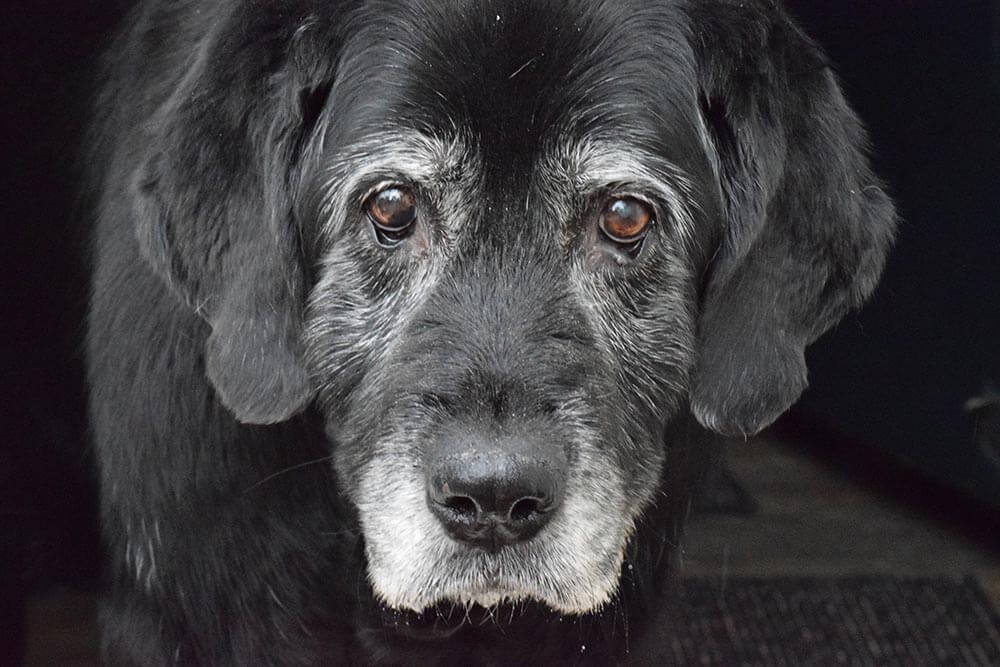
15. Cushing’s disease
An overproduction of the stress hormone cortisol can lead to Cushing’s disease, which typically affects middle-aged to senior dogs.
Many dogs with Cushing’s disease exhibit inordinate panting. Other clinical signs include increased appetite, excessive thirst and urination, weight gain, a pot-bellied appearance, and hair loss.
If such symptoms are ignored, Cushing’s disease can lead to diabetes, kidney damage, and other potentially life-threatening illnesses and conditions. Thankfully, the problem of having too much cortisol in the bloodstream can be treated via medication or surgery.
16. Anemia
Is your dog panting and restless? They may have anemia – a deficiency in red blood cells.
Red blood cells are primarily responsible for delivering oxygen to the animal’s tissues. Because the anemic dog doesn’t have enough red blood cells, their body and brain’s oxygen requirement isn’t sufficiently met. The dog thus breathes more heavily and rapidly to increase their oxygen intake.
Anemia is caused by many factors, including internal bleeding, parasites, cancer, bone marrow disease, and immune system disorder. Any issue that generates pain (such as abdominal pain caused by intestinal parasites) can lead to restlessness.
Other signs of anemia include lethargy, poor appetite, and nausea.
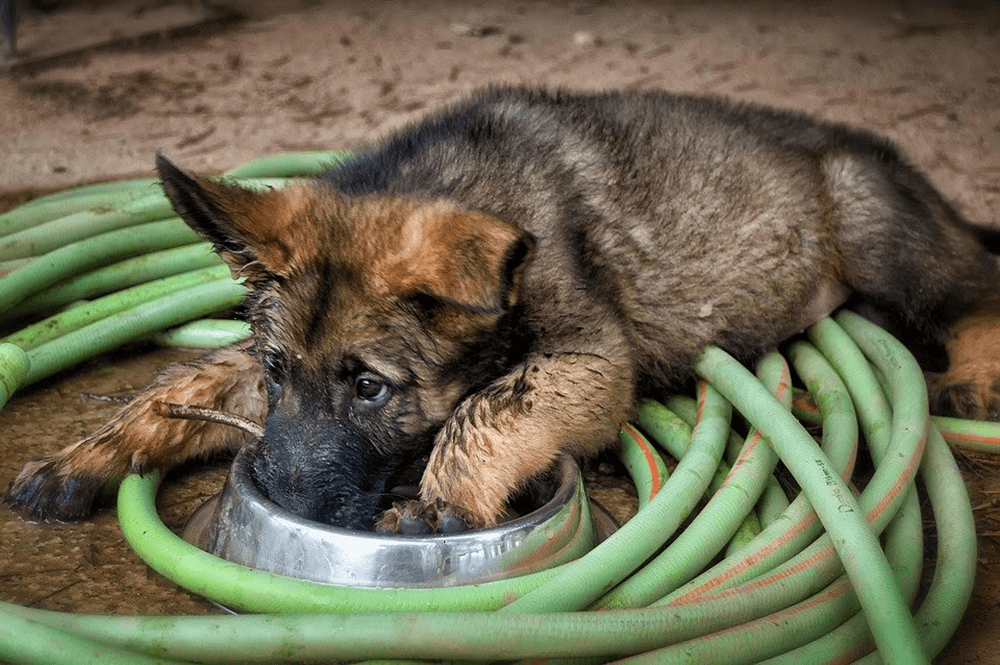
When to see a veterinarian immediately
A panting dog is not necessarily one that’s suffering from an ailment. But if you observe any of the symptoms described above, a vet visit is in order.
Below are other common signs a pacing and panting dog needs urgent veterinary assistance.
- You observe restlessness and excessive panting in your dog after they were exposed to heat
- Your dog won’t stop panting even though more than half an hour has passed since they exercised
- Light physical activity exhausts your dog, causing shortness of breath
- Your dog pants and paces despite inactivity
- Your dog has trouble breathing, in general
- Your dog displays exercise intolerance
- Your dog paces and pants instead of joining physical activity that you and/or other pets are enjoying
- Your dog is too weak to enjoy physical activity or collapses during said activity
- Your dog’s weight is giving them motor and breathing difficulties
- Your dog’s stress or anxiety is interrupting regular routines
- Your dog moves slower than usual, is having trouble keeping balance, or shows signs of disorientation
- Your dog suddenly shows signs of aggression – such as growling and revealing the teeth and gums
- You observe a sudden onset of confused vocalization, such as barking, howling, whining, whimpering, etc.
- You observe excessive licking, chewing, scratching, yawning, grooming, and other displacement behaviors
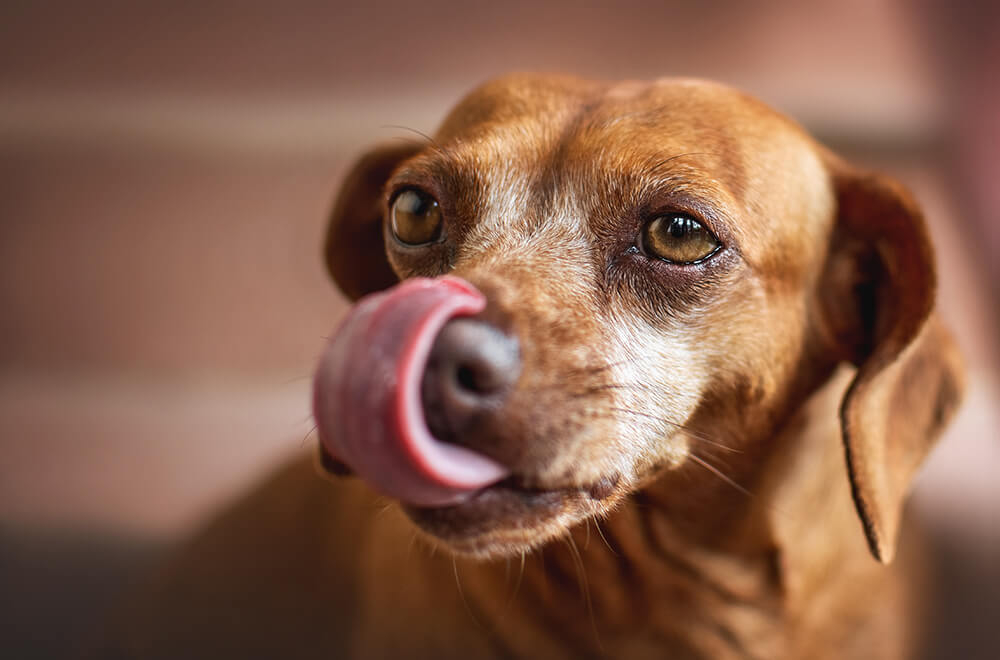
Helping dogs in distress
There are several things pet owners can do to help dogs that are pacing and panting excessively.
1. Veterinary assistance
As discussed above, the best thing you can do upon witnessing abnormal behavior in your pet is to seek veterinary aid as soon as possible. Waiting can make your dog’s ailment grow worse. If your dog has a serious yet undiagnosed medical condition, waiting can even be fatal.
An online consultation will help a vet determine if your dog needs emergency treatment. Alternatively, you can just bring your poor doggo to the vet’s office.
By thoroughly examining your dog, a vet will determine the root cause of their extreme panting and restlessness. Medical testing may involve x-rays, ultrasound, blood sample collection, urine or feces collection, the use of endoscopic equipment, and more.
Based on their findings, the vet will then develop a treatment plan to restore your pooch to health. Your dog may need to undergo a surgical or non-surgical procedure, go on a special diet, take prescription medications, and more.
Various treatments exist for all the issues described in this article. Anxious dogs, for example, will benefit from anti-anxiety drugs. An old dog can ingest supplements to improve their CCD symptoms. Cushing’s disease can be treated via surgery or oral medication. Medications, surgery, a vet-approved low-salt diet, and light exercise can help a pooch with congestive heart failure.
Dogs should be brought to the vet at least once a year for a medical examination. Ensure you also feed your pet a vet-approved diet so they stay healthy and strong.
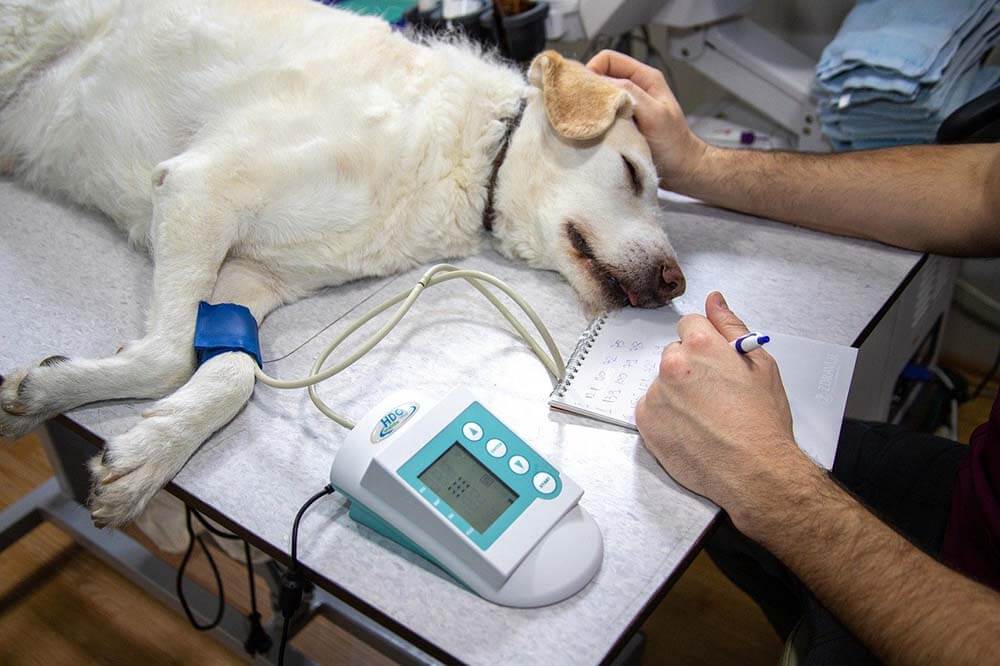
2. Calming techniques
Pet owners can use various strategies to soothe distressed dogs.
If your dog hates loud noises, avoid shouting, blaring music on the stereo, and the like.
Give your dog a comfortable space in your property where they can feel safe. This can be a doghouse, a dog bed, a spot under a piece of furniture, or a section of the yard or living room. You can even have a safety fence installed around this space to ensure no other pet or human can bother your doggo while they’re relaxing.
Crate training can also prove helpful; as long as you’re patient, you can train your dog into seeing the crate as the sanctuary they can go back to whenever they’re not in a great mood.
Showing your dog love and affection during times of anxiety and stress can also help. Soothe them by speaking to them in a calming voice, gently stroking their fur, massaging their muscles, playing peaceful music, and exposing them to pleasing scents such as ginger, vanilla, coconut, and valerian.
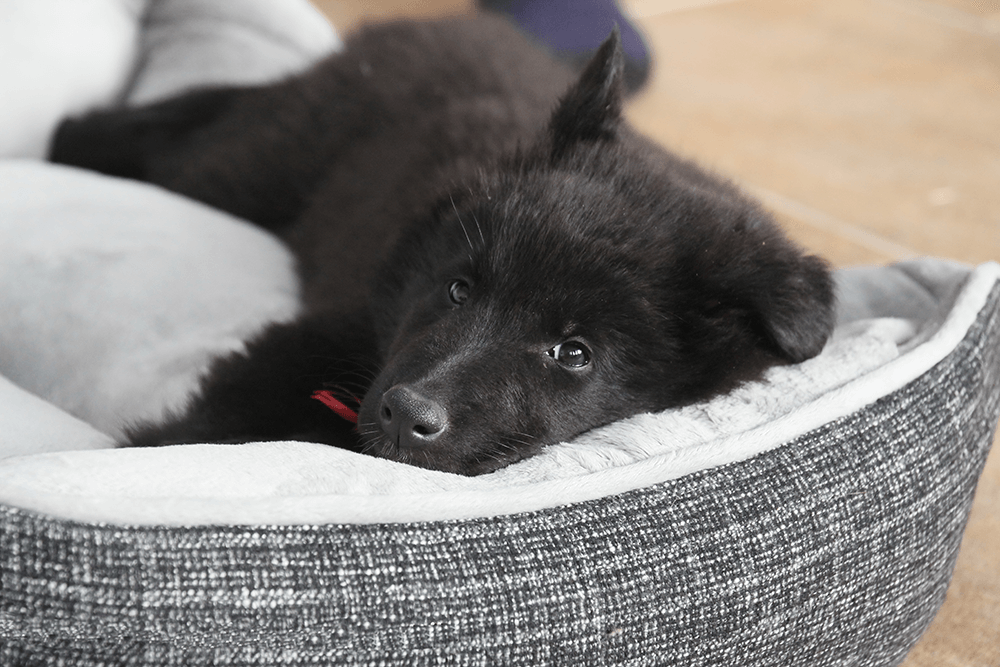
3. General safety
Dogs that enjoy safety and security are more likely to stay in excellent health.
Avoid exposing dogs to potentially harmful situations. For example, avoid walking a Golden Retriever when the sun is high in the sky and the ground is scalding hot. If you want to walk a dog that’s vulnerable to heat exhaustion, you may want to wake up early or wait till the sun’s gone down. And always bring along a bottle of drinking water!
During hot weather, maximize the amount of time your dog spends in an area where they can enjoy cool air. You can even put ice in their drinking water. Don’t force them to continue any physical activity when they’re already panting heavily from exhaustion. Keep in mind that prolonged exposure to direct sunlight or intense heat can seriously harm dogs.
Maintain a clean property. Items that can lead to poisoning, intestinal blockage, or internal injury should be kept out of your dog’s reach or thrown away. With training, dogs will learn to avoid eating sharp objects, soil that may be drenched in pesticides or infested with parasites, and other things that can make them ill.
Regular exercise, training, interaction with humans and other pets, and toys and activities that stimulate the canine brain will keep your dog healthy physically, mentally, and emotionally.
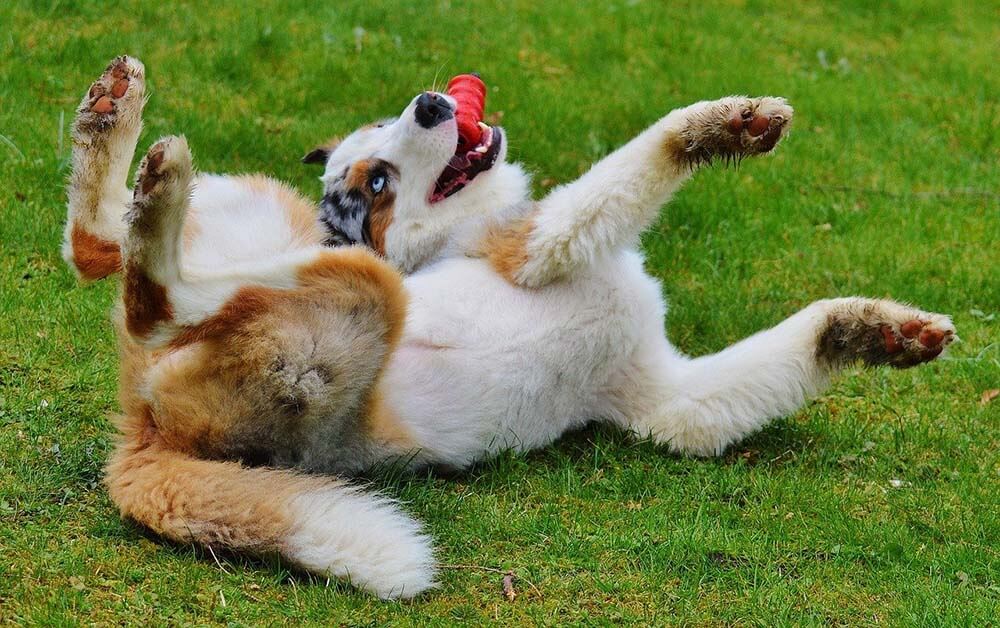
4. Training
Training strengthens the human-canine bond. This helps dogs develop confidence, which can, in turn, reduce their anxiety and stress levels.
Dogs that frequently experience anxiety and stress can also benefit from the desensitization and counterconditioning training techniques.
Desensitization simply involves slowly introducing your dog to a stimulus or situation until they get used to it. Counterconditioning entails rewarding your pet every time they’re exposed to a source of anxiety or stress so that they learn to associate positive experiences with said source. These two techniques often go hand in hand.
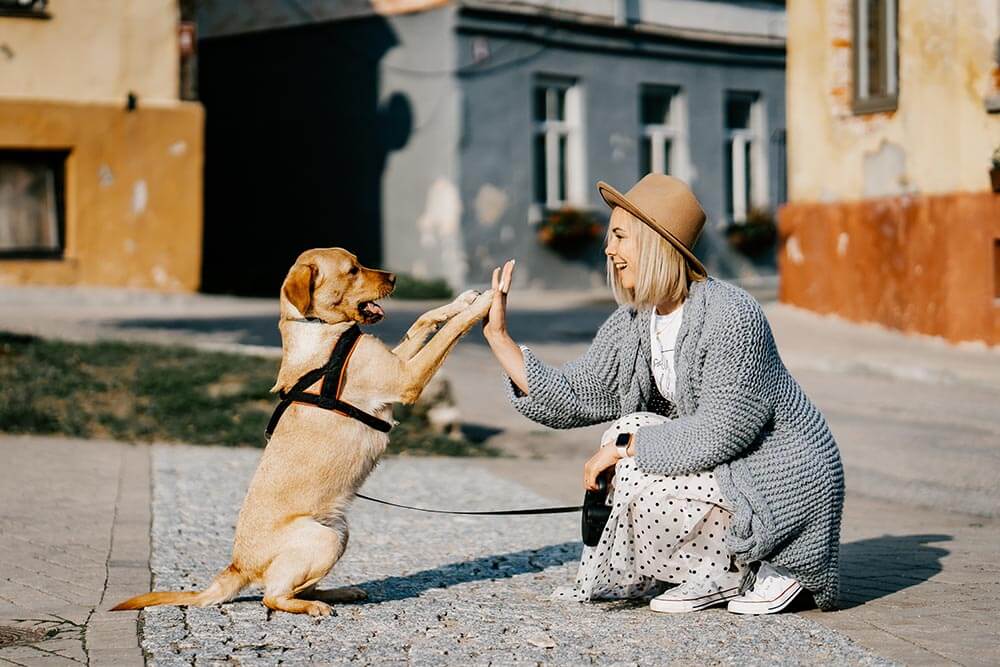
In conclusion…
Any excess of normal behavior is abnormal. So while it’s normal for dogs to pant, excessive panting, especially when accompanied by pacing, is a sign your pet needs your help.
So stay vigilant; if you observe any of the symptoms described in today’s article, seek a vet’s help and do everything you can to ensure your dog stays in good health.
